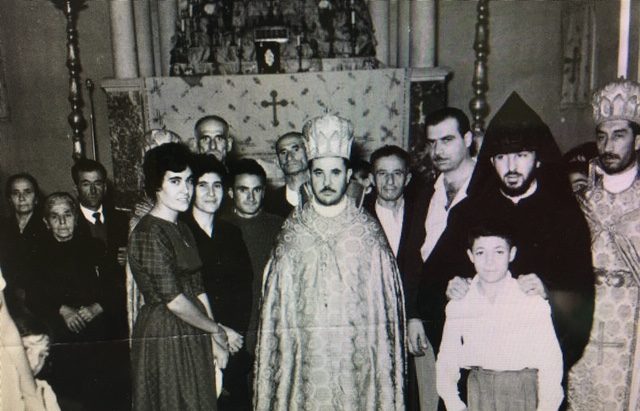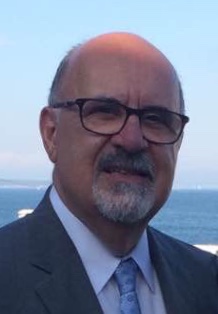The events in Lebanon in the last year, especially the devastating economic and political crises, have severely tested once again the resiliency of this remarkable society. The horrific explosion at the Port of Beirut last week causes us to think: how much can this beleaguered nation take?
When nationhood was granted in 1943, Lebanon became a financial and commercial center that bridged the Middle East with Europe. Beirut was termed the “Paris of the Middle East” with its French legacy, fashionable image and cosmopolitan atmosphere.
The governmental structure of Lebanon was a hybrid model that recognized the importance of its heterogeneous mix of ethnicities and religions. It carefully allocated positions based on demographics to its diversity in a power sharing structure. That structure held Lebanon together but also has been used to create political instability. Its history since the 1950s has been focused on surviving and recovering from a series of political crises. Many have led to sectarian violence leading up to a devastating civil war from the mid-70s into the 80s. Lebanon is a country built on a careful balance and distribution of power. When that balance is altered, the process breaks down. Demographic shifts and radical politics have pushed Lebanon into power struggles and dysfunction in recent years. It is a tragedy that this oasis of freedom and tolerance has evolved into its current state. Still, Lebanon has clawed back from the brink several times due to the resiliency of its citizens. Many remember the Lebanon they have lost but dream of its future. If we have learned anything in the last several decades, it is to never count the Lebanese out. Strength emerges from adversity.
The worldwide Armenian nation has maintained a special relationship with Lebanon. In the aftermath of the Genocide, Armenians were welcomed and attracted to this enclave, then a part of Syria under a French mandate, with a substantial Christian (Maronite, Greek etc.) population. When Lebanon earned its independence in 1943, it became one of the most important Arab nations hosting the Armenian Diaspora. Armenians quickly became an important sector of Lebanon’s economy. The Armenian Bourj Hammoud neighborhood became familiar territory. The sophistication and entrepreneurial nature of the Armenians blended well with the urbane atmosphere developing in this blend of Arab and French culture. When the Great House of Cilicia found a permanent home in Antelias in 1930, it cemented Beirut and Lebanon as one of the most important centers of the Armenian Diaspora. As a consequence of Turkey and Syria implementing a territory exchange in 1939 that threatened the historic Musa Dagh villages, the Anjar community was created in Lebanon as a population sanctuary. The Armenian community in Lebanon boasted a historic spiritual center, a university, an extensive secondary school system and became a source of cultural renaissance.
In the decades before Armenia’s independence, there were very few Armenians whose paths did not cross with our brethren in Beirut and Lebanon. My family was established here in America in 1920 when our grandparents emigrated as Genocide survivors. Our grandchildren are now the fourth generation born in this country. Classic America-hyes? Yes, but even a family with 100-year roots in America has ties with Lebanon. In late 1920, my grandparents left Adana with French visas issued to my grandfather and his extended family because of his service as an Armenian Legionnaire. Their transit route was through Beirut to Marseilles. My grandmother (Yergatian family name) had several siblings who traveled with her new husband’s brother and sisters. Two of her sisters decided to stay in Beirut where they married and had children and grandchildren. My father and his brothers had several first cousins in Beirut that they never met but corresponded with and supported through the years. My grandmother was able to visit her sisters a few times. When I was young, I recall my grandparents and their sons receiving correspondence and sending packages to them.
I remember learning the word “Beirutzi” or “Beirut-hye” long before any other term of the diaspora. My father’s early involvement with the creation of the Prelacy brought books and literature into our home which afforded me an early education on the Holy See and Lebanon. I would see the pictures of Bikfaya, the summer residence of the Catholicos and the European-style beaches and wondered about the contrast of the desert stereotype of the Middle East.

In 1967, our new priest arrived in Indian Orchard. As the deacon, my dad spent a great deal of time with Der Sahag Andekian who came from Beirut with his family. He was originally from Anjar, and Yeretzgin was a Terterian from Kessab. Shortly thereafter, her sister and family arrived from Beirut to live in Indian Orchard also. Der Sahag had three children and his two oldest, Sossy and Serop, became my good friends. Yeretzgin’s sister’s family, the Santourians, became very close to our family. One of their sons, Varoujan, became my best friend during those early years. I owe a great deal of my identity as an Armenian to these and other Armenians from Lebanon. This was my Lebanon. They would describe the neighborhoods of West Beirut and the Soorp Nishan Church to me. They would talk about Hamra and other destinations that were so vivid I felt I had been there. My Western Armenian improved as we lived in our Armenian sanctuary. Varujan’s father, the beloved Baron Sarkis, would tell us stories of earlier life in Lebanon that would fill in many of the gaps in my education of this important diaspora community. They spoke from direct relationships with esteemed Armenian Lebanese politicians, Catholicos Zareh, Catholicos Khoren and were cousins with Catholicos Karekin from the Kessab side. It inspired my curiosity and motivated me to read and become a more informed Diaspora Armenian. If we think about it, all of us have a place for Lebanon from our experiences, in our memories and in our hearts. We were all a bit envious of an Armenian community in the diaspora where assimilation was minimal and identity remained strong.
Here we are in the year 2020, and another one of our important Armenian centers in the Middle East is suffering. We have seen this countless times in Lebanon and elsewhere. Our response as a nation? There are some who question investing in a region that is unstable. After all, thousands of Beirut-hyes have followed the path of migration. These are very personal choices driven by individual circumstances. Who are we, in the comfort of our freedom, to encourage others to leave their homes and go to Armenia or the west? If they choose to, fine, but we must do what we have always done: build and support each other. The American Armenian community has always supported our brethren in Lebanon. In the 1940s through the 60s it was to establish infrastructure, particularly in schools. During the civil war of the 70s and 80s humanitarian aid was delivered in addition to rebuilding the community.
Lebanon’s Armenians are part of our family. You never turn your back on family.
Today is no different. Our survival in the diaspora is based on a pan-Armenian interdependency. The immigration and strong presence of Lebanese Armenians in the United States has actually helped that advocacy. Our community today is made up of people like myself who owe an identity debt to our brethren in Lebanon as well as immigrants and their descendants who have emotional ties to the region. It’s the same in Iran, Syria or Europe. We are one! We have a tendency to be parochial and territorial at times. The emergence of an independent Armenia has given birth to a new level of pan-Armenian collaboration, not just the rhetoric but backed by actions. Out of adversity like the devastating earthquake in 1988, we have learned how to care for each other. Lebanon’s Armenians are part of our family. You never turn your back on family.
Each of our communities is special. Lebanon is no exception. The Holy See of Cilicia resides there along with significant cultural infrastructure. Armenians are vested in the government structure and are a respected element of reason. Armenians have worked hard to maintain neutrality in the conflicts, and this has earned them a unique role in Lebanon. In a country filled with destruction and chaos, they are an asset. The preservation of this community is not just important to the greater Armenian nation, it is a critical element for Lebanon. Armenians have survived in these volatile regions with skilled balance in their relationships. The impact of this should never be underestimated. Lebanon has an Armenian community that has something in common with all of us regardless of where we live, people who want a quality of life who work hard to maintain it and want the same for their children. Nearly all major Armenian organizations have issued appeals for assistance for our brethren. You can give through the mail, social media or other online options. Give because these people are part of our family. Give because our institutions and presence are important. Give because we all have a piece of Lebanon in our heart.



Another test fell on the shoulders of the Lebanese people. It is very important now to support the local population.
Great article Stepan.
All those names and learnings…..
Larry (Marsha’s brother from CT)